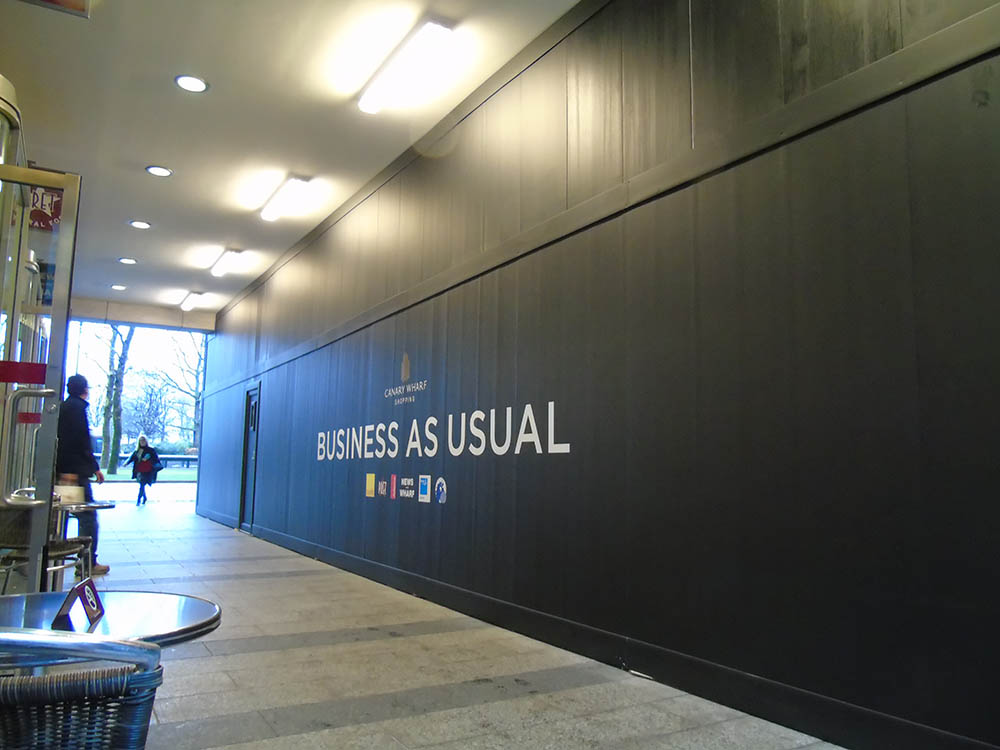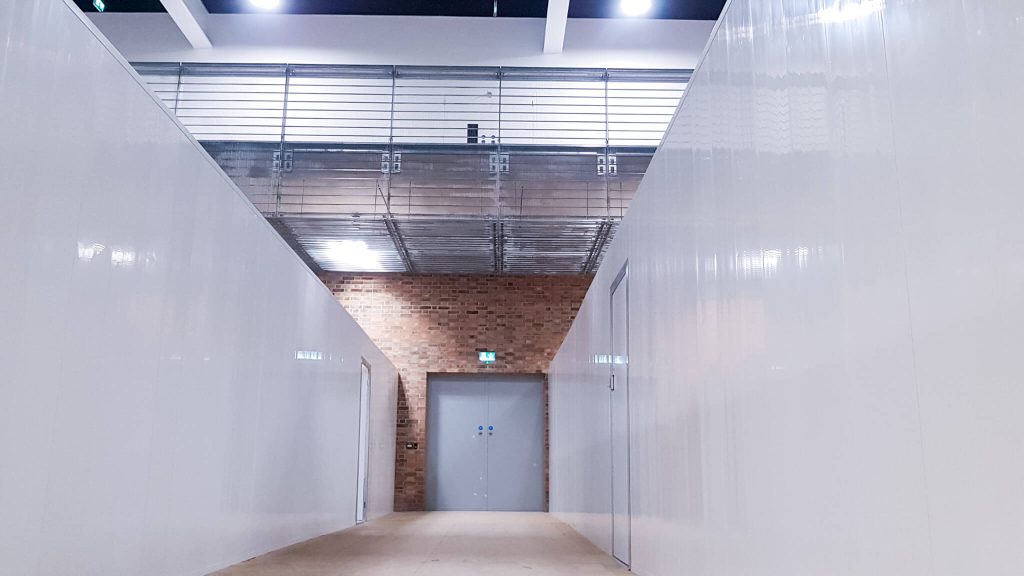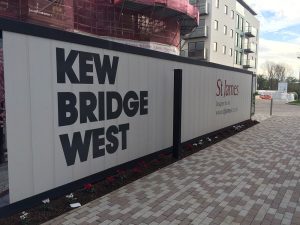
Selecting the appropriate temporary hoarding system for your construction project is a critical decision that impacts safety, security, aesthetics, and even project timelines. With various options available in the market, understanding your specific requirements and the different systems’ capabilities is essential for making an informed choice. This guide will help you navigate the selection process for your temporary hoarding system construction needs, ensuring you choose a solution that’s efficient, cost-effective, and fit for purpose.
Understanding Temporary Hoarding Systems
Temporary hoarding systems are protective barriers installed around construction sites to ensure safety, security, and compliance with regulations. These systems not only prevent unauthorised access to potentially hazardous areas but also help control dust and debris, reduce noise pollution, and maintain a professional appearance during construction activities.
High-quality temporary hoarding system construction requires careful consideration of various factors, from material selection to installation methods. Let’s explore the key considerations to help you make the right choice for your project.
Types of Hoarding Systems
When it comes to temporary hoarding system construction, there are several options available, each with distinct advantages:
uPVC hoarding systems like Plas-Shop’s patented solution offer numerous benefits over traditional timber alternatives. These systems are environmentally friendly, being 100% recyclable; free from the need for painting or regular maintenance; modular in design, allowing for quick installation and dismantling; suitable for both internal and external applications; and capable of achieving heights of up to 6 metres.
Traditional timber hoarding has been a standard in the industry but comes with drawbacks including regular maintenance requirements, lower environmental sustainability, generally shorter lifespan, and more time-consuming installation and removal processes.
Mesh and fence systems provide lightweight options primarily suitable for external sites requiring basic security rather than full screening or dust containment.

Indoor vs Outdoor Hoarding Requirements
The environmental conditions of your project significantly influence the type of temporary hoarding system you should select.
For indoor construction projects, such as retail fit-outs or hospital renovations, your hoarding system should prioritize:
- Dust containment to prevent contamination of surrounding areas
- Noise reduction capabilities
- Clean, professional aesthetics that don’t detract from operational environments
- Easy installation that minimises disruption
- Potential for doors and viewing windows where required
Plas-Shop’s internal screening systems are specifically designed for these environments, offering a neat, clean appearance with minimal disruption during installation.
Outdoor temporary hoarding system construction requires different considerations due to exposure to elements and greater security concerns. These systems need weather resistance to withstand wind, rain, and temperature fluctuations; enhanced security features to prevent site breaches; durability against potential vandalism; proper foundation systems to ensure stability; and compliance with local planning regulations regarding height and appearance.
Project Duration Considerations
The length of your project directly influences the most cost-effective temporary hoarding system construction approach. For short-term projects lasting a few weeks or months, consider lightweight, modular systems that install and dismantle quickly. Look for hire options rather than purchase to reduce costs, and prioritise systems that don’t require groundworks or extensive foundations.
For long-term construction periods, it makes sense to invest in durable systems that withstand prolonged exposure. Consider the total lifecycle cost including maintenance, and choose systems with flexibility to adapt as project phases change.
Plas-Shop’s temporary hoarding systems are available for both purchase and hire, making them suitable for projects of any duration. Their modular nature allows for reconfiguration as project needs evolve.
Site Security Needs
Security requirements vary significantly between projects, influencing your temporary hoarding system selection. For sites requiring enhanced security, choose solid panel systems without footholds or handholds. Consider systems with anti-climb features, options compatible with CCTV mounting and security lighting, and ensure access points are properly secured with robust doors and locks.
For projects with basic security needs, focus on creating a clear boundary that discourages casual trespassing. Ensure adequate height (typically minimum 2.4 metres) and include appropriate signage to warn potential trespassers.
Plas-Shop’s systems include various hoarding heights and secure access options, providing scalable security based on your specific project requirements.
Weather Conditions and Hoarding Durability
British weather presents particular challenges for temporary hoarding system construction. Your system must withstand:
- Strong winds and rain
- Temperature fluctuations
- UV exposure
- Potential flooding in certain areas
Plas-Shop’s uPVC hoarding systems offer exceptional weather resistance compared to timber alternatives. Their systems don’t warp, rot, or require repainting after exposure to the elements. Additionally, the company offers specific solutions for flood-prone sites, ensuring your hoarding remains stable even in challenging conditions.

Installation Methods
The installation process impacts project timelines, costs, and disruption levels. Temporary hoarding system construction may utilise different foundation methods including concrete block ballasts for non-invasive installation, ground pins for soft surfaces, floor-fixed options for indoor hoarding applications, and specially designed options for installation on existing flooring.
Consider how quickly you need your hoarding in place. Traditional timber systems typically require longer installation periods, while modular systems like Plas-Shop can be installed up to 75% faster than timber. Some projects may require phased installation as work progresses.
Hoarding System Components
A comprehensive temporary hoarding system construction often requires more than just panels. Consider these additional components:
Access points are essential, including personnel doors for staff entry/exit, double doors for material movement, and compliance with emergency access requirements.
Windows and viewing panels may be needed, such as acrylic viewing windows for public interest, vision panels for security monitoring, and marketing opportunities through window displays.
Graphics and branding provide opportunity for company branding, project information displays, and wayfinding and directional information.
Plas-Shop offers a complete solution including all these components, with customisation options to meet specific project requirements. Their Plas-Shop online store makes ordering additional components or replacement parts straightforward.
Sustainability Factors in Hoarding Selection
Environmental considerations are increasingly important in construction decisions, including temporary hoarding system construction. Plas-Shop’s systems are 100% recyclable at end of life, significantly reducing landfill waste compared to traditional timber hoarding.
Modular systems can be dismantled and reused on future projects, maximising their lifecycle value and minimising waste. By eliminating the need for painting and reducing transport weight compared to timber, uPVC systems can offer carbon footprint advantages over their lifecycle.
For projects seeking certifications like BREEAM, choosing sustainable hoarding systems can contribute to overall environmental performance scores.





